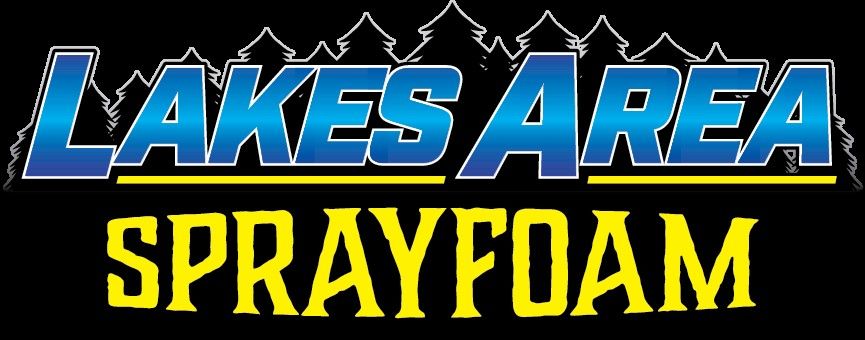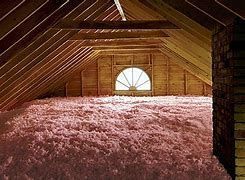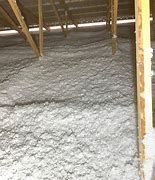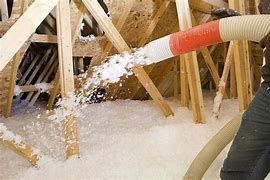Blown-in insulation is a method of installing various insulation materials by blowing them into place. It is more a method of installing insulation than a type of insulation.
The most popular materials used for blown-in insulation include fiberglass, cellulose, and mineral wool.
Blown-in insulation can be used as loft insulation, cavity wall insulation, or external wall insulation.
It is a versatile, cost-effective, and eco-friendly solution that enhances energy efficiency, comfort, and soundproofing in residential and commercial buildings.
What is Blown-In Insulation
Cost conscious homeowners are doing everything possible to lower their heating and cooling costs. Here's what you need to know about blown-in insulation and how it can help in your home or building.
The most common type of insulation comes in blankets, usually in bats or rolls that fit between joists or studs. Blown-in Insulation, on the other hand, is loose fill installed by blowing into place.
As the name implies, we install blown-in insulation by blowing loose fill insulation into areas like attics or walls. Our installers use a machine with a blower hose to blow the insulation into the designated spaces.
This is one of the methods used by our team to make an existing home more energy efficient. It's easier to install than fiberglass batts or rolls, which would require that you/we take down walls or ceilings.
With blow-in insulation, all you need is a small access point, our team with a machine, and some fill, and we can easily add insulation to enclosed areas in your home or building.
Usually you can leave the old insulation in place and blow more in on top of it to increase your home or building's R-values.
Energy Efficiency - Blown-in insulation significantly improves a building's energy efficiency by reducing heat transfer. It helps maintain a comfortable indoor temperature, reducing the need for excessive heating or cooling.
Cost-Effective - Blown-in insulation is cost-effective because it can be installed quickly and efficiently. It fills gaps and voids, ensuring better coverage and minimizing energy loss.
Versatility - Blown-in insulation can be used in various areas, including attics, walls, and floors. It adapts well to irregular spaces and hard to reach areas.
Soundproofing - Blown-in insulation also acts as a sound barrier, reducing noise transmission between rooms, floors and from the outside.
Eco-Friendly - Materials like cellulose are made from recycled paper, making blown-in insulation an environmentally friendly choice.
Fire Resistance - Some blown-in materials, such as mineral wool have fire-resistant properties, enhancing safety.
Moisture Control - Properly installed blown-in insulation helps prevent moisture build up, reducing the risk of mold and mildew.
Types of material used in Blown-In Insulation - Also known as loose-fill insulation, blown-in insulation is typically cellulose, fiberglass, or mineral wool.
According to "Energy Star" - homeowners can save up to 15% on their heating and cooling bill by installing blown-in insulation!
Advantages
Improved Comfort and Indoor Air Quality - When your building or home is properly insulated, it creates a level of comfort from extreme temperatures that you cannot achieve with heating and cooling no matter how much you spend.
Reducing Heat Transfer to and from your roof is critical, and you will be surprised at how much more comfortable your home will be after adding Blown-In insulation to your attic.
Additionally, insulation plays a key role in protecting the air quality in your home. By blocking air leaks, insulation blocks everything that comes with air out of your home. That includes pollen, smoke and other outdoor pollutants.
Environmentally Friendly Option - Increasing the insulating value (R Value) of your building or home reduces your carbon footprint as well.
Plus, the manufacturers make eco-friendly insulation materials from recycled paper products and sustainable plant materials. That keeps those waste products out of the waste stream at the end of their life cycle.
Disadvantages
There are just a few:
Settling and Loss of R-Value Over Time - It takes about 15 to 30 years, but over time, blown-in insulation settles and loses some of its R-value. Proper installation techniques, adequate ventilation, and choosing the right materials for your climate and TEAM of Professionals will minimize settling.
Uneven Distribution and Gaps - Gaps in insulation can significantly impact the R-value of your insulation. Distributing blown-in insulation is challenging, especially if you have limited access to your attic.
Potential Health Concerns - The health concerns of blown-in insulation primarily involve mishandling or improper installation. All types of blown-in attic insulation consists of tiny particles, and when blown into place, they can be hazardous to your eyes and airways. Our Team of Professionals are fully suited with the proper PPE (Personal Protection Equipment). For comparison check out our Spray Foam page at www.lakesareasprayfoam.com/spray-foam.



